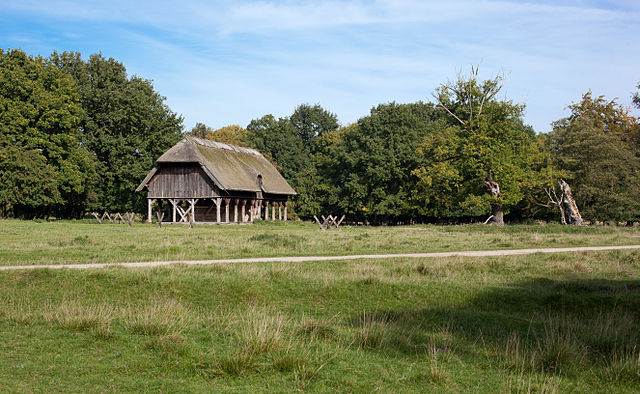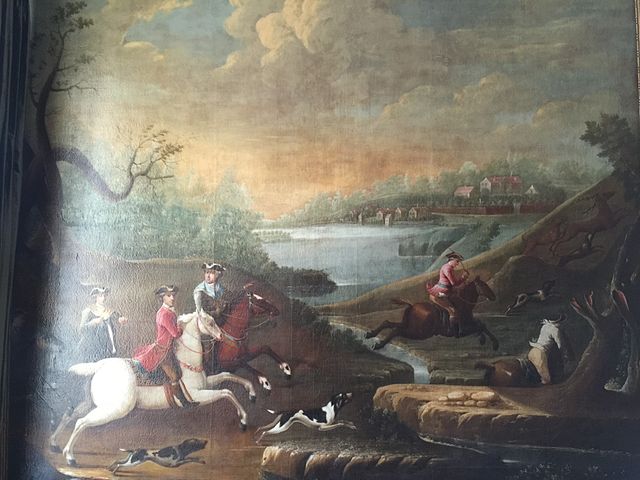Par force hunting landscape in North Zealand
The Par force hunting landscape in North Zealand is a collection of hunting grounds and forests north of Copenhagen. The landscape was submitted for admission to the UNESCO List of World Heritage Sites on 1 August 2010 and was inscribed on 4 July 2015. The landscape comprises three main areas: Store Dyrehave, Gribskov and Jægersborg Dyrehave/Jægersborg Hegn, and contains the most significant hunting grounds for the medieval nobility in Denmark. The central-star grid design of the landscape, with numbered roads and stone posts, fences, demonstrates the unique planning and design of hunting landscapes in the 17th and 18th centuries.
Par force hunting landscape in North Zealand
Deer at the Hermitage Lodge in Jægersborg Dyrehave
Par force hunting in North Zealand c. 1750, watercolour by Johan Jacob Bruun
King Christian VII on a par force hunt
Store Dyrehave is a forest located to the east of the village Ny Hammersholt immediately south of Hillerød, on both sides of Københavnsvej, in North Zealand, Denmark. Consisting of conifers and beech, it was enclosed with stone walls in 1619–28 as a royal deer park for hunting. In 1680, Christian V introduced a geometrical system of roads forming a star with eight branches for par force hunting. Although par force hunting was discontinued in 1777, the road system and numbered stone posts remain fully intact. Store Dyrehave is one of the three forests forming the Par force hunting landscape in North Zealand, a UNESCO World Heritage Site.
The 8-way junction of Stjernen (lit.: The Star) with the King's Stone at the centre. Store Dyrehave.
Malte Enghave, a pasture which is again graxed by cattle to keep the area open.
Stone wall on Overdrevsvej
The King's Stone








